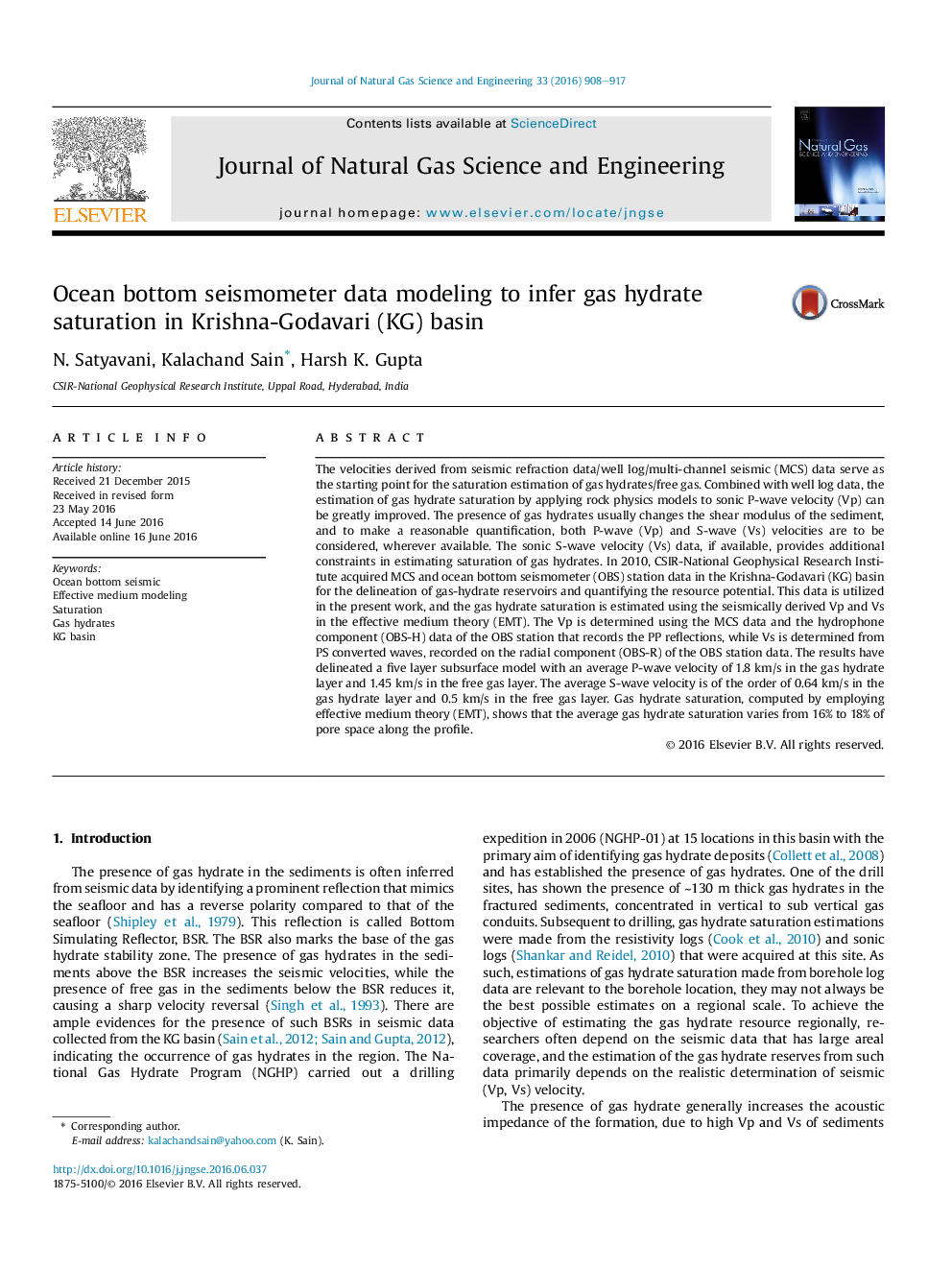| کد مقاله | کد نشریه | سال انتشار | مقاله انگلیسی | نسخه تمام متن |
|---|---|---|---|---|
| 1757123 | 1523008 | 2016 | 10 صفحه PDF | دانلود رایگان |

• Gas Hydrate saturation from OBS data in the Krishna-Godavari (KG) basin.
• Travel time modeling of reflected phases and converted phases for Vp and Vs respectively.
• The saturation of the gas hydrates from effective medium theory is 17–20% of pore space.
The velocities derived from seismic refraction data/well log/multi-channel seismic (MCS) data serve as the starting point for the saturation estimation of gas hydrates/free gas. Combined with well log data, the estimation of gas hydrate saturation by applying rock physics models to sonic P-wave velocity (Vp) can be greatly improved. The presence of gas hydrates usually changes the shear modulus of the sediment, and to make a reasonable quantification, both P-wave (Vp) and S-wave (Vs) velocities are to be considered, wherever available. The sonic S-wave velocity (Vs) data, if available, provides additional constraints in estimating saturation of gas hydrates. In 2010, CSIR-National Geophysical Research Institute acquired MCS and ocean bottom seismometer (OBS) station data in the Krishna-Godavari (KG) basin for the delineation of gas-hydrate reservoirs and quantifying the resource potential. This data is utilized in the present work, and the gas hydrate saturation is estimated using the seismically derived Vp and Vs in the effective medium theory (EMT). The Vp is determined using the MCS data and the hydrophone component (OBS-H) data of the OBS station that records the PP reflections, while Vs is determined from PS converted waves, recorded on the radial component (OBS-R) of the OBS station data. The results have delineated a five layer subsurface model with an average P-wave velocity of 1.8 km/s in the gas hydrate layer and 1.45 km/s in the free gas layer. The average S-wave velocity is of the order of 0.64 km/s in the gas hydrate layer and 0.5 km/s in the free gas layer. Gas hydrate saturation, computed by employing effective medium theory (EMT), shows that the average gas hydrate saturation varies from 16% to 18% of pore space along the profile.
Journal: Journal of Natural Gas Science and Engineering - Volume 33, July 2016, Pages 908–917